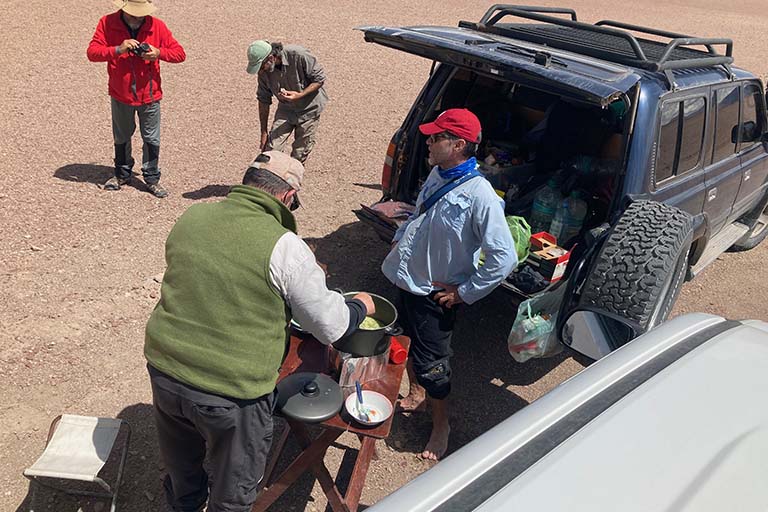BANNER IMAGE: Flamingos at Lake Vilama, high in the Andes Mountains in Argentina. | Photo by Enrique Derlindati
The Andean Flamingo is endemic to the Andes Mountains and is among the rarest waterbird species on the planet. Although seemingly out of place in the barren landscape of the high Andes, three of the six flamingo species on the planet (Andean, Puna, and Chilean Flamingos) breed exclusively in high Andean lakes. In particular, the Andean Flamingo (Phoenicoparrus andinus) is among the rarest of all flamingo species and listed as Vulnerable (i.e., with a “high risk of endangerment in the wild”) by the IUCN Species Survival Commission. It is also listed in the Convention of Migratory Species as “facing a very high risk of extinction in the wild in the near future.”
Andean Flamingos migrate between distantly separated wetlands, which they depend on to breed and forage for food. Many of these wetlands, however, are drying up due to climate change and are becoming increasingly polluted due to mining activities. The central Andes are home to some of the largest lithium reserves on the planet, and a need for lithium in rechargeable batteries in a variety of devices from phones to electric vehicles is driving much of the mining activity in and near the wetlands these birds depend upon. As a result, numerous mining companies are rushing to provide this unique element to an increasingly hungry rechargeable battery market.
To study whether and how these mining activities and climate change impact Andean Flamingos, Alex Jahn, MCB co-director and research scientist with the IU Department of Biology, is collaborating with colleagues in Argentina: Enrique Derlindati is a researcher at the Universidad Nacional de Salta, and Joaquín Cereghetti is experienced in using satellite transmitters to track bird movements. The researchers use satellite transmitters attached to the flamingos to track their movements, and identify: 1) the wetlands they use during different times of year, 2) which parts of the wetlands they use, and 3) the timing of their movements between wetlands.
With this information, Jahn and his colleagues will provide recommendations to local government and non-government agencies across the range of the Andean Flamingo. For example, if flamingo movements show that the birds are using a specific set of wetlands in a predictable manner (e.g., at the same time of year, across years), they will recommend a management strategy focused on protecting a handful of specific sites, whereas if the flamingo movements are unpredictable and they use a wide range of wetlands, the researchers will recommend a strategy that focuses on protecting multiple sites across a wider area and that considers how the birds use these sites at different times of year.
























